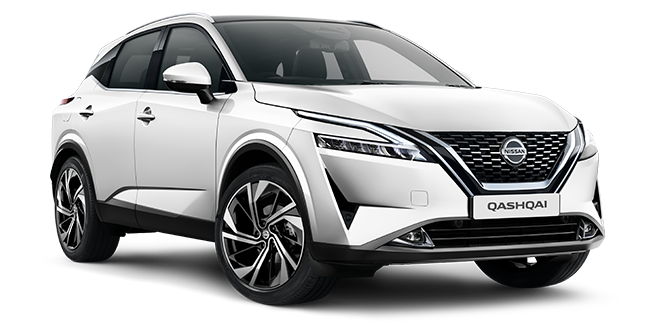Car finance calculator
These estimates are subject to credit checks and may change when you apply for finance. this is for example purposes only
Hire Purchase (HP)
APR 11.9%60 monthly payments of
£0
- Interest rate
- 11.9% APR
- Amount of interest
- £0
- Total payment
- £0
Personal Contract Purchase (PCP)
APR 11.9%60 monthly payments of
£0
- Optional final payment
- £0
- Interest rate
- 11.9% APR
- Amount of interest
- £0
- Total payment
- £0
Rates from 9.9% APR: the exact rate you will be offered will be based on your circumstances, subject to status. Representative Hire purchase (HP) example: borrowing £7,000 over 5 years with a representative APR of 21.9%, the annual interest rate of 21.9% (Fixed) and a deposit of £0, the amount payable would be £185.33 per month, with a total cost of credit of £4,119.81 and a total amount payable of £11,119.81. We look to find the best rate from our panel of lenders and will offer you the best deal that you're eligible for. We receive a fixed fee commission per finance agreement, or we receive a commission based on a percentage of the total amount of finance taken. This will not affect the interest rate offered or the total amount repayable. Our service is free.
You can still change your car if you’re in negative equity. We help you arrange negative equity car finance that covers what you owe and gets you into a deal that works for your budget. And we make the process quick, clear, and stress-free.
You choose the car. We handle the shortfall and set up payments you can afford. Then you drive away without the debt from your old agreement holding you back.
Our customers who have already got car finance!
- High Acceptance Rate
- Representative APR 21.9%
- Rated excellent on Trustpilot
What is negative equity in finance?
Negative equity occurs when your outstanding loan balance is higher than the current market value of the car. It’s a common situation in car finance. The car is worth less than the amount you still owe on your car finance agreement. And this gap is called the negative equity amount.
For example, your loan balance might be £5,000. The value of the car in the used car market could be £3,500. You’d have £1,500 of negative equity in car finance. And that means you owe more than you could get if you sold the car today.
Cars depreciate quickly. Mileage, age, condition, and market demand all affect the value of the car. But the biggest drop happens early in the loan term, when most monthly payments cover interest instead of the principal.
The problem appears when you try to sell the car or part exchange your car. If the sale price doesn’t cover the outstanding loan, you must pay the shortfall. Or you could roll the negative equity into a new finance agreement.
Can I get car finance if I have negative equity?
Yes, sure, some lenders will offer negative equity car finance to you. Approval depends on your circumstances, the outstanding finance, and affordability checks. Having a negative equity on a car doesn’t block you from a new finance deal, but you need to know how it will affect your budget.
You might:
- Find a vehicle cheaper than the total value of the car you own now.
- Trade in your current model to lower the shortfall.
- Agree the remaining amount with the finance company.
By doing this, you can replace your vehicle, settle the shortfall, and avoid end up in negative equity again. And you can use our car finance calculator to check what you can afford before you apply.
What causes negative equity in car finance?
You want clear causes and fixes. Here they are:
- Car depreciation. Cars depreciate fastest early on. The value can fall below your balance, especially in the first year.
Pick models that hold market value, keep mileage sensible, and service on schedule.
- High interest or long terms. A high interest rate/APR or a long term pushes more of your monthly payments to interest, not capital.
Shorten the term, improve the deal, or refinance at a lower APR.
- Small deposit. A tiny deposit gives little equity at the start. You trail the price drop and risk a gap.
Add cash upfront or part-exchange to boost equity on day one.
- Rolling shortfalls forward. Adding an old shortfall to a new agreement keeps you in the negative from the start.
Pay off part of the gap, or choose a cheaper used car to cut borrowing.
- Overpaying for the car. Paying above market value creates an instant deficit.
Compare prices with Carplus, check trade values, and use our car finance calculator before you apply.
- Damage or write-offs. Accidents, heavy wear, or Category S/N history slash resale value.
Repair cost-effectively, disclose history, and price the deal accordingly.
- Early trade-in. Swapping your vehicle too soon bites, because the steepest depreciation lands early.
Check settlement versus market value; wait if the numbers don’t stack.
- Product fit (PCP vs HP). PCP has lower payments and a balloon; equity builds slower. HP repays capital faster but can cost more each month.
Match product to budget and equity goals.
- Income/affordability shifts. If repayments strain your income, you may extend terms or refinance badly, deepening the gap.
Recut term, add payment buffer, and keep the outstanding in check.
- Dealer pricing and add-ons. Extras inflate the total amount payable without raising resale value.
Strip non-essentials, negotiate, and confirm the representative APR.
How to get out of negative equity car finance?
- Get a settlement figure from your lender. This tells you exactly how much you need to clear before you can move on to your next car.
- Make extra payments to clear the shortfall faster. Even a small increase each month can cut the term and reduce the interest you pay.
- Trade in for a cheaper car and have the negative equity to be rolled into the new deal. This can lower your monthly payments, but you’ll still be paying for the shortfall.
- Refinance to a better rate or longer term. This can make payments more manageable, but check the total cost so you don’t pay more in the long run.
- Hand the car back on PCP if you qualify for voluntary termination. This ends the agreement early without paying for the rest of the term, but you must meet the contract conditions.
When getting car finance with negative equity works and when it doesn’t
When it works
You can get a negative equity finance deal if the shortfall is small enough for lenders to include in a new agreement. For example, if the car is only worth £3,500 and you owe £5,000, the £1,500 gap can be added to the deal as long as the payments stay affordable. Choosing a cheaper car can make this easier. A larger deposit or strong part-exchange value also helps reduce negative equity.
When it doesn’t
But this won’t work for everyone. Lenders have limits on how much shortfall they will include in a negative equity finance deal. Before approving credit to clear your outstanding balance, they look at:
What we consider
- Size of the shortfall between the value and the outstanding balance.
- Amount of your deposit and the price of the replacement car you want.
- Total amount payable and product fit (HP or PCP). Equity on a car occurs when the value is higher than the debt — we aim to keep you there.
How to improve your chances
- Add cash to pay off the negative part of the balance.
- Contact your finance provider for a settlement figure.
- Pick a model that holds its market value in the context of car depreciation.
- Avoid a finance agreement early that could cause negative equity again.
It’s always possible to avoid negative equity with the right steps, but not in every case. Lenders will work with you if the structure is sustainable and you can show you won’t get into negative equity again. The goal is to reach the car outright without overpaying.
When is negative equity a problem?
A car with negative equity makes changing or selling more complicated and often more expensive. You can’t clear the debt by selling or part-exchanging, because the sale price won’t cover the balance. And if you return the car on PCP, you might still need to pay the outstanding amount under your agreement.
You can roll the shortfall into a new car finance deal, but this increases the total amount payable and could raise your monthly payments. It can also delay your plans to buy a car or change your car until you rebuild equity in the car and reduce negative equity.
If your car is written off, the insurance payout might not match what you owe, leaving you to pay the rest yourself.
If you find yourself in negative equity, we can help you get out of negative equity with options that fit your budget and keep your next deal sustainable.
Negative equity with PCP car finance
PCP gives lower monthly payments and a large final balloon payment if you want to keep the car. You can part exchange and roll the shortfall into a new deal if the payments work for your budget. Or you can return the car at the end, or use voluntary termination once you’ve paid 50% of the total amount payable.
What to do now:
- Get a settlement figure and a trade-in valuation for your vehicle.
- Decide: roll the shortfall into new car finance, pay off part of it, or keep the car and continue paying.
- Check APR, total payable, and how it affects your monthly payments in our car finance calculator.
- Watch for extra mileage or damage charges.
You can move to a new car on PCP if the costs stay controlled and the terms suit you.
Negative equity with HP car finance
With Hire Purchase (HP), you repay capital faster and there’s no final balloon payment. If you settle early, you can pay off the shortfall, part exchange into a cheaper used car, or refinance a smaller amount into a new deal.
What to do now:
- Get the early-settlement figure and a trade value.
- Pick a lower-price car to cut borrowing and reduce negative equity risk.
- Compare interest rates and fees before you apply.
- Use the calculator to check deposit, term, and repayments against your income.
You can restructure HP to manage the shortfall and work towards owning the car.
How much negative equity can you finance?
There’s no fixed number. Lenders decide case by case, based on affordability and the market value of the new car. They look at your outstanding loan, your deposit, and how the monthly payments will fit your budget under the finance agreement.
Think of it like this. Shortfall + new car price − deposit = total amount to finance. If that figure sits inside a lender’s limits and the interest and APR keep repayments affordable, the deal can work. And it can work on PCP or HP, as long as the structure makes sense.
What sets your limit
- Affordability: your income, other payments, and the target monthly figure.
- Loan-to-value: how the shortfall plus price compares to the market value of your vehicle.
- Deposit and part exchange: bigger equity in, smaller risk out.
- Product fit: PCP (with a balloon) can lower payments; HP repays capital faster.
- Term and rate: interest rate/APR and term shape cost and risk as cars depreciate.
At Carplus, we match you to a panel of lenders and confirm how much negative equity we can include before you sign. But we only recommend structures that you can afford and that keep your car finance sustainable.
How can I avoid negative equity on a car?
- Put down a larger deposit. This gives you much equity from the start and means you owe less over the term. It also helps if you want to end an agreement early.
- Make higher payments. Paying more each month lets you pay off the negative quicker and build equity faster. You cut the time until you own the car outright and reduce the interest paid.
- Choose a car that holds value. Some models keep their market value better than others. Avoid cars that cause negative equity by depreciating heavily in the first years.
- Go for a cheaper car. Borrowing less lowers your monthly payments and protects you from a big shortfall if the car is only worth less than expected later.
Or contact your finance provider to see how much equity you have now. Knowing your position makes it easier to avoid deals that could make negative equity happen.
Why Our Customers Rate Us 5 stars

Compare deals
Compare and find the best car finance deals - quick and easy. When comparing deals, consider the part-exchange value of your current car to reduce the overall cost.
No impact to your credit
Getting a finance quote with Carplus won't affect your credit score, but a hard search will be completed before completion of the deal
No deposit deals
No deposit options are available on all deals. Check if you are eligible today and get approved risk-free with soft search.
Instant quote decision
Get your UK car finance decision in minutes. Check your eligibility first. Apply in confidence with Carplus
Find your perfect car finance deal
FAQ
Will gap insurance cover negative equity?
Gap insurance can cover negative equity if your car is written off or stolen and the payout is less than the outstanding balance. Coverage depends on the policy. Check the terms or ask your provider before relying on it.
Will putting down a larger deposit reduce my chances of negative equity?
A larger deposit can reduce negative equity risk by lowering your loan balance and narrowing the gap to the car’s value. But depreciation and loan terms still matter. On PCP deals, a big deposit may not always be cost-effective, so get advice before committing.
Should I be worried about negative equity?
Negative equity is common but can limit your options. Act early to reduce its impact. You could make extra payments, refinance, or negotiate with your lender. Spreading your loan over a longer term lowers monthly costs but increases total interest.
Can you end car finance early if you have negative equity?
You can end car finance early with negative equity by settling the debt with your provider. But you may face early repayment fees or extra charges, which could increase the shortfall. Always check the settlement figure before making a decision.
Can I part exchange my car with negative equity?
You can part exchange a car with negative equity, but you must settle the finance first. If the settlement figure is higher than the car’s value, you’ll need to pay the difference. A dealer can handle the settlement, but you’ll still cover the shortfall.
How much negative equity can you roll into a car?
Most finance providers typically have a maximum loan-to-value ratio of around 125%, meaning that your car’s loan should not exceed more than around 125% of its value.
Do dealerships pay off negative equity?
Car owners who owe more on their vehicle than they’re likely to get from a trade-in offer could find themselves looking for dealerships who can “guarantee” that their car loan can be 100% paid. However, when a dealership offers to pay off the full amount that you owe on your vehicle, it usually means they’re taking your negative equity on to your next car credit.
Can negative equity be written off?
To get rid of your car loan's negative equity, you can pay it off all at once. For instance, if you owe £5,000 on your car and the lender offers £4,000 for the trade-in, you would make up the £1,000 difference to your finance company.





